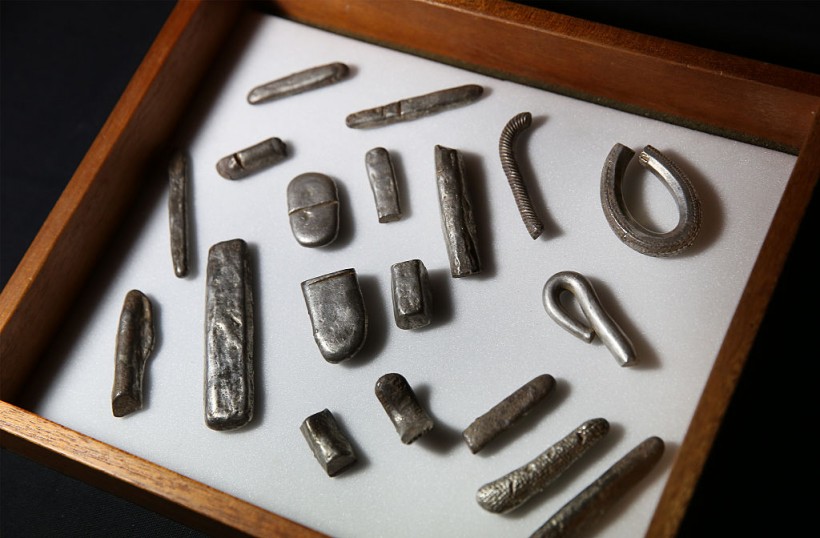A collaboration of archaeologists from the University of Haifa and the Hebrew University of Jerusalem discovered silver coins created in Anatolia (Turkey) in the 17th century BCE, during the Middle Bronze Age or about 3,600 years ago. The irregular-shaped precious metal used in regional trade was discovered near Jerusalem at Tel Shiloh, and in the Gaza Strip at Tell al-Ajjul.
According to the Jerusalem Post, their finding demonstrates the usage of silver coins as money in the southern Levant and predates by 500 years what was previously assumed.

A Viking hoard of 9-10th century silver objects, including arm ring fragments and ingots, is displayed at The British Museum on February 10, 2015 in London, England.
Residents in Southern Levant Might Be More Numerically Educated Than Expected
The fact that Anatolia was identified as the source of the money implies that there has been ongoing and long-term commerce with Asia Minor. Dr. Tzilla Eshel of the University of Haifa, the lead author of the study, said that using silver coins as a mode of payment brings many advantages and new possibilities that contributed o the urban and economic development of a region.
Moreover, it could be a sign that administrators in the region, which is part of the Southern Levant, were more numerically educated than their predecessors, which allowed them to measure the weight of silver when paying for goods.
Archaeologist Tzilla Eshel from the University of Haifa told Live Science that the Middle Bronze Age was a period of large ramparts and fortifications, but it was a mystery how they pay their workers.
The team wrote in their study, titled "The earliest silver currency hoards in the Southern Levant: Metal trade in the transition from the Middle to the Late Bronze Age" published in the Journal of Archaeological Science, that workers could have been paid in an agreed-upon weight of silver following the practice in the northern Levant, which covers Lebanon and Syria.
The practice of using the weight of silver metal was also common during the Viking Age in Europe in which silver was known as "hacksilver." Eshel said that the use of silver as currency in the southern Levant came in this period due to necessity and because there was a big organization that could manage it.
READ ALSO: Hoard of 5,500 Roman-era Silver Found Buried By The River in Augsburg City in Germany; Who Owned It?
Origins of the Silver Hoards
Eshel and the team attempted to uncover the origins of the silver hoards they found in Israel and Gaza by analyzing the chemical impurities and isotopes in them. Isotopes are variations in the number of neutrons in particular elements that change over time due to radiation.
According to Live Science, their analysis showed signs of widespread transition of the sources of the metal in about 1200 BC, pointing to the possibility of them coming from Anatolia, presently known as Turkey, to being mined in southeastern Europe and then being brought to the Levant because of long-distance trading.
But surprisingly, researchers said that the silver of later origin was similar to those found in famous graves dated in Bronze Age Mycenaean culture in Greece. The authors wrote in their study that it is possible that both contemporaneous assemblages of silver came from the same source.
RELATED ARTICLE: Treasure Trove of 200 Roman-era Coins Discovered in Spain Through a Hungry Badger Hunting For Food
Check out more news and information on Archaeology in Science Times.



![Earth's Quasi-Moon Kamo‘oalewa Could Originate From Lunar Surface Not Asteroid Belt [Study]](https://1721181113.rsc.cdn77.org/data/thumbs/full/53275/89/56/50/40/earths-quasi-moon-kamo-oalewa-could-originate-from-lunar-surface-not-asteroid-belt-study.png)










